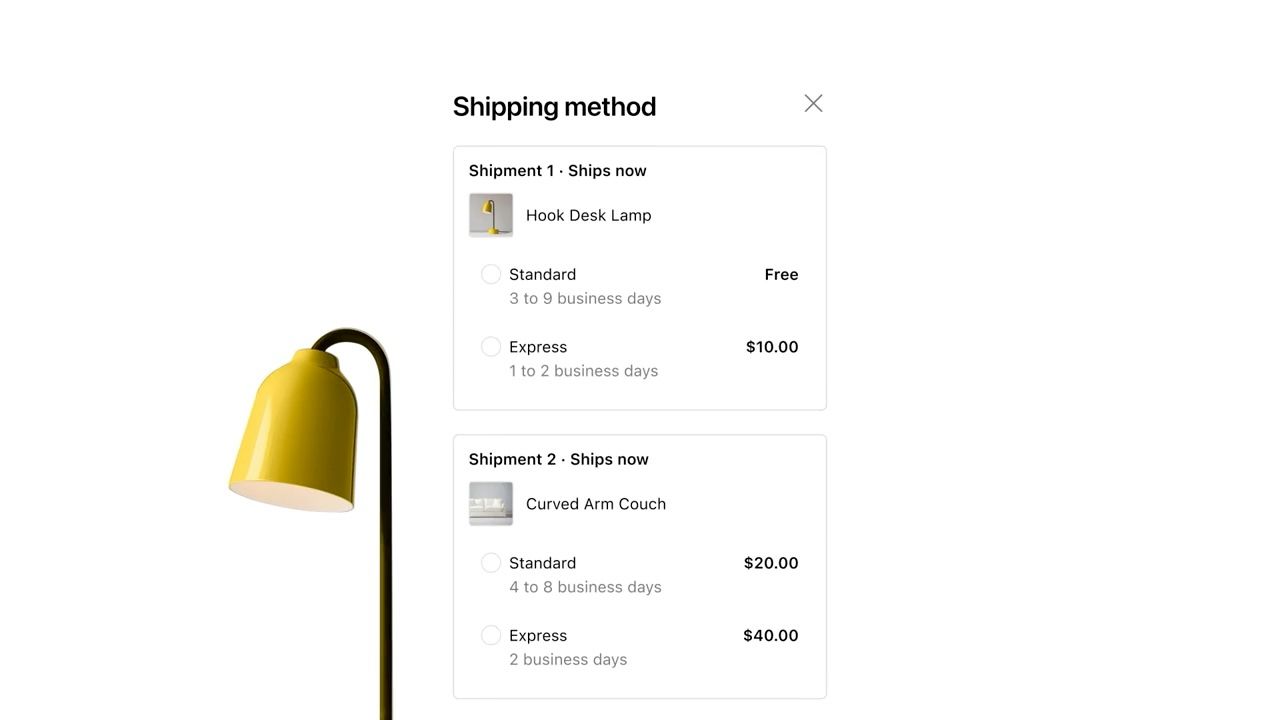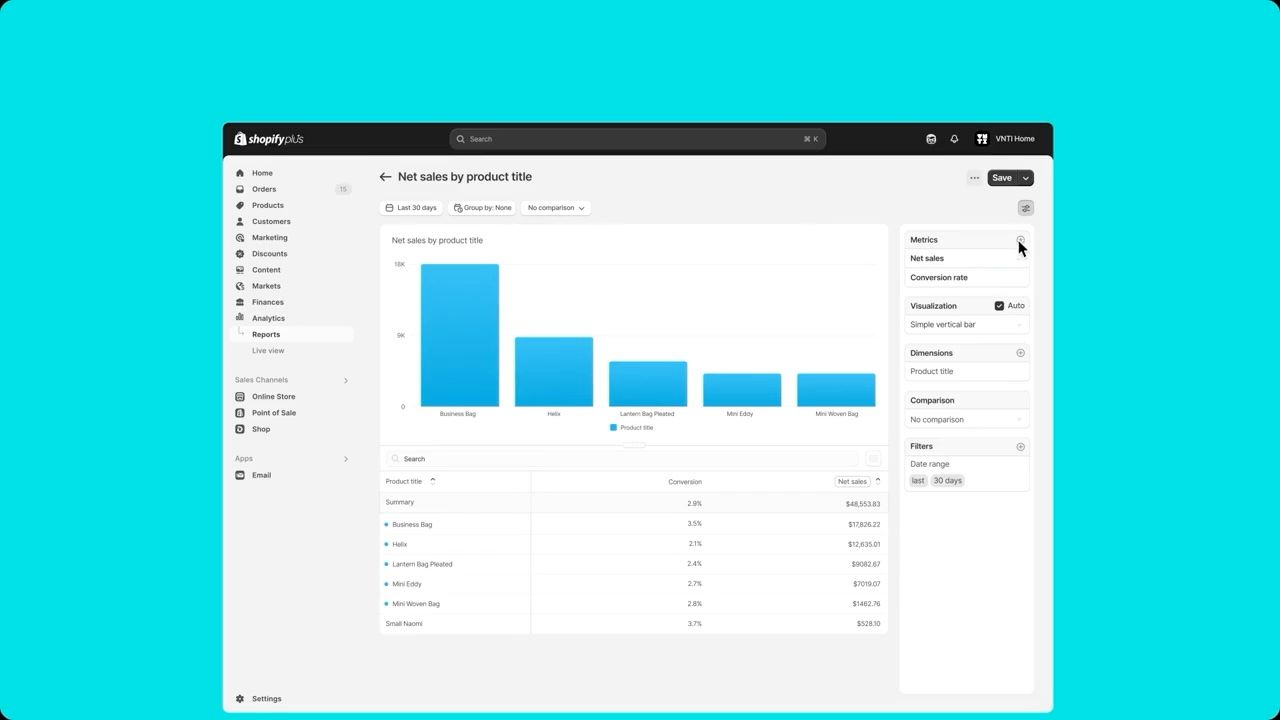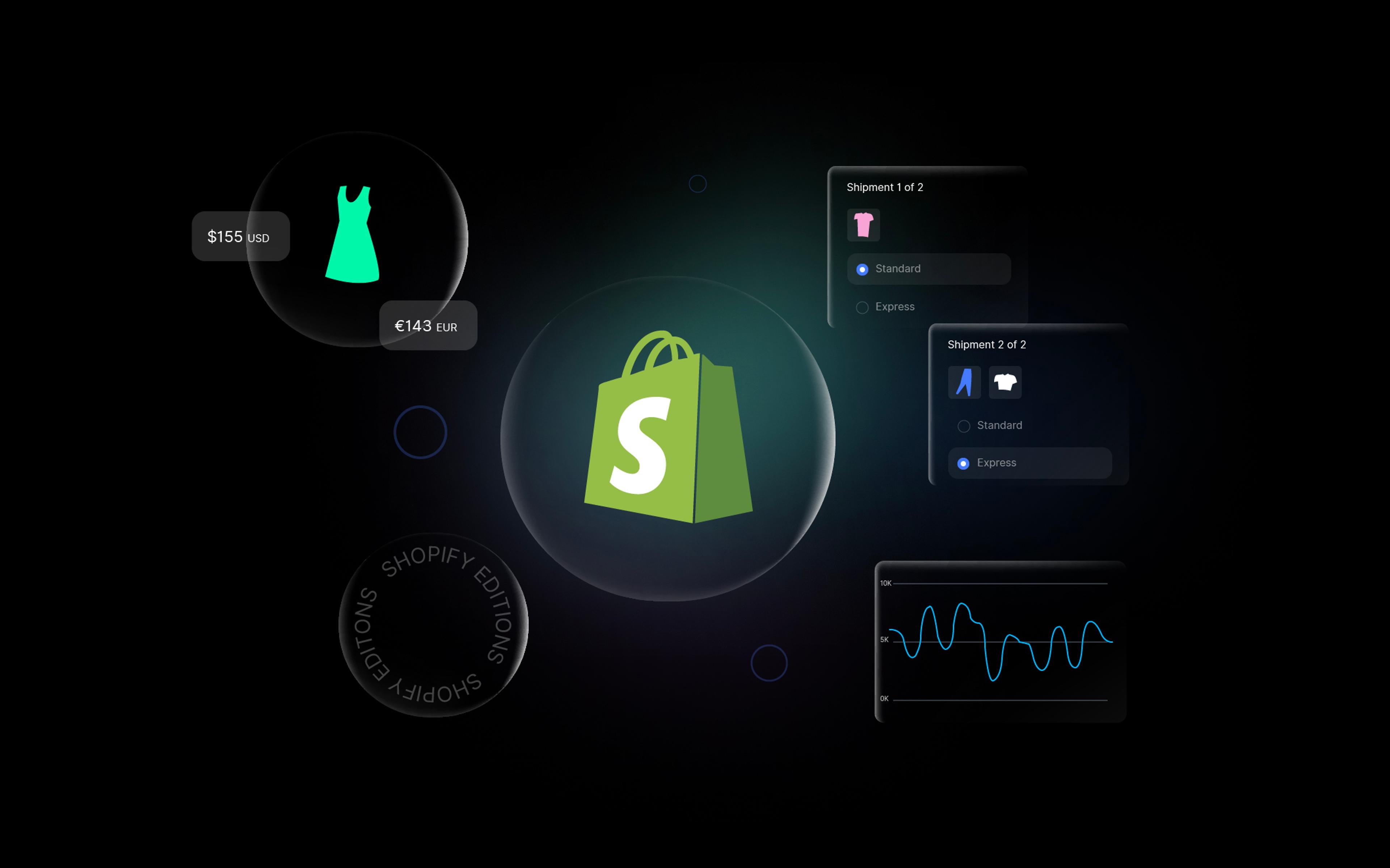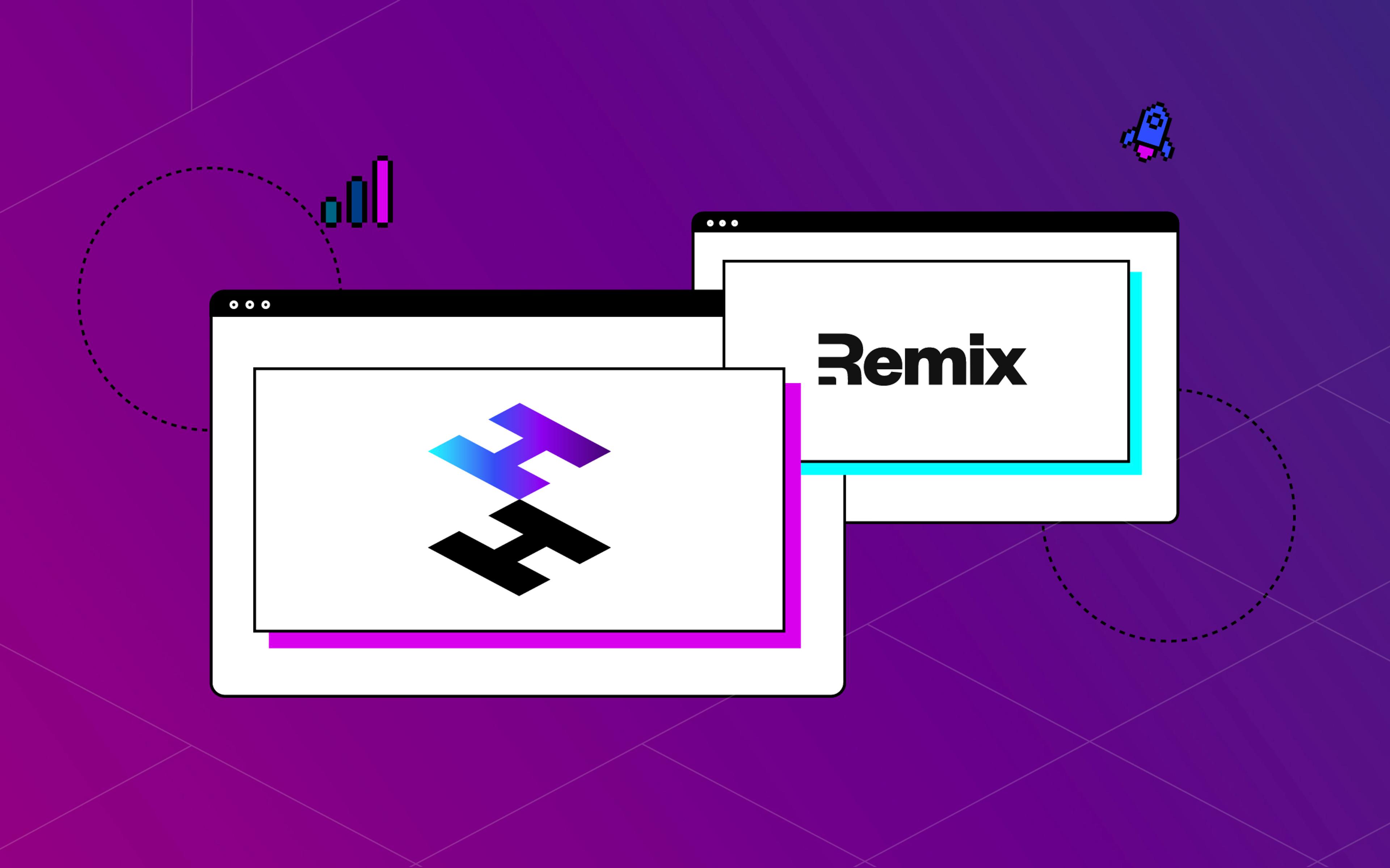A couple of weeks ago, Shopify released the Summer ’24 Edition. Since its humble beginnings in the summer of ’22, Editions has evolved into a major biyearly marketing initiative the Shopify team uses to update their customers and the larger commerce industry about the latest product announcements, upcoming functionality, and the general direction the platform is taking.
The splashy landing pages are then coronated by several official events, earned media (including, yes, the very article you’re reading), and fringe industry gatherings aimed at creating more hype around the platform and, by extension, the hundreds of industry players that live in its shadow and participate in its ecosystem.
And since everyone and their dog has an opinion on Editions, we thought we’d be remiss not to share our take on the most exciting announcements.
In the following paragraphs, you’ll find a recap of our favorite announcements from the Shopify Summer ’24 Edition, along with our opinions on what they mean for the future of the ecosystem.
Let’s get into it!
You Get a Market, You Get a Market, Everybody Gets a Market
Historically, internationalization on Shopify has been challenging. For a long time, brands that wanted to start selling in other countries were forced to set up expansion stores that were, effectively, completely independent of the main store. This forced brands to sync their product catalog, settings, inventory, apps, etc., across all their stores–a Sisyphean task that often required installing clunky apps.
Then, in late 2021, Shopify released Shopify Markets, a game-changing feature for brands looking to sell internationally. Markets allowed brands to sell to multiple countries from a single Shopify store while still controlling product catalogs, pricing, shipping, and other configurations on a per-country basis. Markets simplified international selling on Shopify dramatically and was acclaimed positively by both agencies and brands.
One year later, Shopify released B2B, making it easier for brands to sell wholesale. Shopify B2B allowed merchants to manage company profiles, configure B2B-specific payment methods and terms, and set up dedicated price lists. It came at a time when more brands were looking at B2B to drive profitable growth and allowed brands to manage their wholesale operations from the same platform they knew and loved for DTC.
Until now, Markets and B2B have been entirely independent, each functioning according to different rules and concepts and configured in their respective UIs. Add to this Shopify POS, which was launched in 2013 and also operated as a completely separate sales channel. Understandably, this created friction for merchants, who needed to navigate a complex maze of settings and rules to determine how their brand shows up in different channels.

In the Summer ’24 Edition, Shopify announced that Markets will become a unified home to manage all of your brand’s expansion efforts, whether you’re talking about new countries, B2B, or POS. For each channel, you can now configure the product catalog, availability, pricing, and much more from a single UI, and you can even combine different types of markets (e.g., all retail stores in the UK).
This not only gives brands an unprecedented amount of flexibility, but it also dramatically reduces the operational effort of maintaining multiple sales channels.
Finally, Shopify also announced that each market will be able to use a separate business entity for payments. This long overdue change often prevented international brands from adopting Markets, forcing them to use expansion stores with all their quirks and limitations.
Our team was pretty excited about this change: It brings much-needed consistency to several areas of the platform and unlocks a range of use cases that were not possible before, such as having completely different themes for different markets or having complete control over the product catalog available to retail stores. It all feels right, as evidenced by the ecosystem’s overwhelmingly positive response.
The new Markets experience is not available to the public yet, but you can sign up to get notified when it will be released.
New Shopify POS Functionality Gives Your Retail Stores Superpowers
Besides Markets, Shopify has put a lot of effort into making sure that all the different sales channels they offer to merchants are fully integrated. In the process, they’ve resolved some annoying gotchas and inconsistencies that had bothered merchants for years and unlocked new, exciting use cases.
POS got a lot of love in this regard. First of all, the POS hardware is now available in nine new countries–Belgium, Denmark, Germany, Ireland, Italy (yay!), the Netherlands, New Zealand, Spain, and the UK. In the last few years, we’ve seen pretty strong demand for Shopify’s POS devices in Europe, so it’s great to finally be able to offer them to merchants–Shopify’s hardware is excellent, and we can’t wait to experiment with it a bit more.
Secondly, Shopify is also enabling truly unified shopping experiences with two new features that bridge the gap between online and offline:
- Ship to store, which boosts Shopify’s existing BOPIS (Buy Online, Pickup In Store) functionality by allowing customers to choose their favorite pickup location regardless of inventory availability. When the product is unavailable, Shopify will seamlessly orchestrate delivery to the customer’s chosen pickup point.
- Ship from store, which allows merchants to use their stores as last-mile fulfillment networks. Online orders will appear on the retail store’s POS interface, from which store operators can fulfill the orders or, if unable, delegate fulfillment to another location or back to a standard fulfillment center.

Finally, POS became more intelligent and more integrated with the rest of the Shopify ecosystem. This includes functionality such as:
- One-tap digital receipts, which can be delivered by email, text, or, if the customer has a Shop Pay account, to the Shop app.
- The ability to collect personal information such as name and email, marketing opt-ins, and sales staff attribution at checkout.
- Automatic integration with your store’s return rules, which reduces the likelihood of out-of-policy returns.
Combined, these features allow brands to make the most of their physical stores, reducing fulfillment costs, improving the customer experience, and helping brands collect more zero-party data. In an era when all merchants are trying to do more with less, this is the sort of innovation that we like to see from Shopify.
Checkout Is Getting a Flexibility Boost
Shopify’s checkout has long been a significant component of the platform’s value proposition and, at the same time, one of its biggest weaknesses. While it’s great for merchants to be able to delegate compliance concerns or checkout CRO to Shopify, the lack of customizability in the checkout flow has prevented specific categories of brands from implementing their ideal customer experience or, in some instances, from adopting Shopify altogether.
Some of this rigidity is by design: Shopify doesn’t want brands to shoot themselves in their metaphorical foot by making changes that could negatively impact their conversion rates. Finding the right balance between flexibility and compliance with industry regulations is also challenging, especially with the new limitations imposed by PCI DSS v4.
That said, Shopify has been doing some great work on this front over the last few years by adopting a two-pronged approach: They’ve been opening up the checkout to more types of customizations and more elaborate use cases, but they’ve also been forcing merchants to use a set of standardized APIs (dubbed Checkout Extensibility) to alter their checkout flow.

In the latest Edition, Shopify has continued on this path by releasing a slew of new features and customization APIs for their checkout:
- Checkout Blocks, a third-party app that allowed merchants to apply complex customizations to their checkout in a no-code UI, has been acquired by Shopify and is now free for all Shopify Plus merchants. It’s a fantastic product, and we couldn’t be happier for Gil and his team!
- Checkout will soon support split shipping, allowing customers to see when an order will be split into multiple shipments and pick a different shipping method for each shipment. On a similar note, it’s now possible to capture partial payments when part of an order is fulfilled.
- In a move that will undoubtedly be appreciated by brands outside the US, Shopify is now offering the ability to implement third-party integrations for pickup points (not available yet) and address autocompletion, as well as to collect region-specific address fields and different forms of tax ID for individual and business customers.
- Developers can now use the Checkout Branding API (available to Shopify Plus merchants only) to configure the checkout flow’s overall styling and UI elements. Additionally, they can pre-fill the address at checkout, which is handy for gift and wedding registries and other non-traditional shopping experiences.
These changes, most of which are targeted at international brands or brands with complex use cases such as marketplaces, give merchants some much-needed flexibility while still allowing Shopify to guarantee compliance and retain control over the end-user experience.
In fact, we were working with a couple of brands waiting for some of this functionality to switch to Shopify, and we can’t wait to try it in the wild.
Analytics, Controls, and Automation for Operators That Mean Business
Last but not least, Shopify announced a range of new features aimed at larger, more sophisticated brands that need greater visibility into and control over their businesses.
The spotlight goes to the new Shopify Analytics, which allows merchants to build advanced custom reports and dashboards and, soon, query their data directly using ShopifyQL. Combined, these two features unlock much greater flexibility when it comes to business analytics, reducing the need for merchants to roll out and maintain dedicated business intelligence infrastructure.

Organization settings and staff access also received some love. While the details are not completely fleshed out yet, it looks like companies will soon be able to manage multiple stores from a unified interface and assign staff access through a Role-Based Access Control (RBAC) system.
Finally, Shopify is releasing several improvements for Shopify Flow, their built-in task automation platform. Flow is becoming more powerful (thanks to features such as the ability to send direct requests to the Admin API), easier to use (see the improved UX for working with metafields), and more convenient to debug when something goes wrong (with a better search experience and manual reruns).
While Flow still leaves a lot to be desired (how much longer until we can use the result of an API call inside Flow?!), it’s a robust product for automatic basic tasks in a low-code environment. In fact, we’ve been able to use it in several instances where we would have previously reached for a custom app or an external automation platform, such as Zapier.
Hydrogen Gets The First-Class Treatment: Visual Editor and B2B Storefronts
On the headless front, much work went into creating consistency between Hydrogen’s off-the-shelf capabilities and what brands can do with Online Store.
The most prominent announcement here was the new Hydrogen Visual Editor, based on an open-source solution called Utopia. The editor, which is yet to be released, will allow marketers to manage the content of their storefronts through a visual page builder.
Furthermore, the new visual editor actually updates the underlying code of your storefront rather than loading content through a client-side network call. This comes with several benefits, including much faster page load times and all the goodies of Git-based version control.
In the past, we’ve had to roll out similar features manually through solutions such as Sanity and Builder.io, so it’s great to have this out of the box and officially supported by Shopify. That said, we were surprised that Shopify didn’t just acquire an established player in the space, such as Pack or Instant, and integrated their solution natively.
We’re also still waiting for the day when Shopify will decide to unify its content management solutions, using the same technology across Online Store and Hydrogen. Perhaps this is a small step in that direction.

In addition to the Visual Editor, it is now possible to launch headless B2B storefronts–a feature that was previously only available for Online Store. There’s even a Hydrogen B2B template that you can leverage to speed up time-to-market if you wish.
These are the major announcements, but Shopify also announced many additional improvements to Hydrogen, such as an optimistic cart API for instantaneous cart updates, official support for Vite, native integration with Shopify Analytics and the Customer Privacy API, better environment variable management, and improved SEO tooling.
One of the main problems with headless Shopify architectures has been the feature and capability gap between Hydrogen and Online Store. There are still inconsistencies to figure out, especially when it comes to the app ecosystem. Still, with some of these announcements, it feels like we’re getting closer, which is excellent news for all merchants that need a more sophisticated storefront than what Liquid themes allow.
There’s Much More…
In this article, we have deliberately omitted a lot of stuff, cherry-picking the announcements and capabilities that were most relevant to the work we typically do with our clients. We didn’t talk about the improvements to Shopify Magic or all the work Shopify is doing around third-party sales channels and Shop, their own marketplace. If you run a Shopify brand, we encourage you to check out the official Editions site to ensure you’re not missing anything!
That said, it’s clear that Shopify plans to continue pushing in all directions. For smaller brands, they are rolling out features that allow them to do more with less, leveraging the strength of Shopify’s ecosystem and economies of scale.
For larger brands, they’re making the platform more flexible to support more complex use cases. At the same time, though, they’re also creating consistency and feature parity across different flavors and sales channels to minimize the amount of gotchas and “insider knowledge” required to navigate the Shopify universe.
Given the size of that ecosystem, it’s an uphill battle, but if anyone has the market traction and R&D budget to pull this off, it’s Shopify–and we’re excited to be part of the ride.



